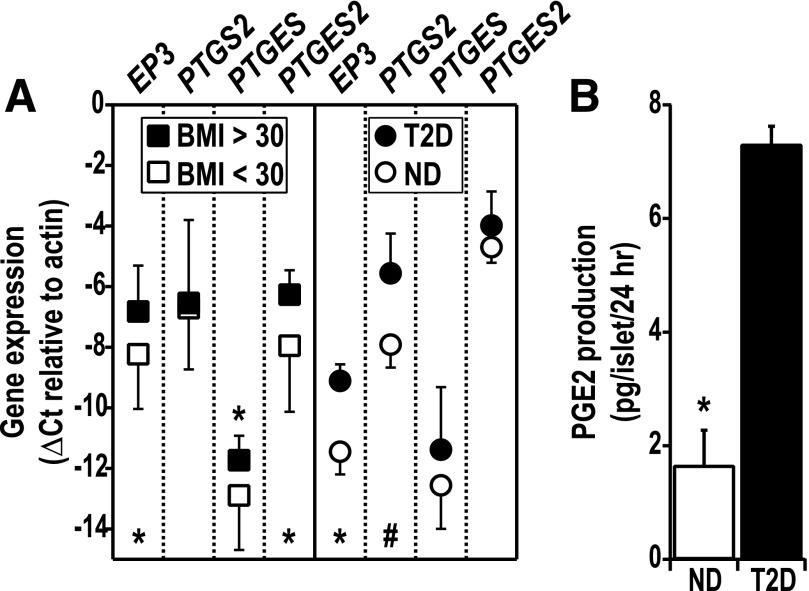FIG. 4.
Human islet PTGER3 and PGE2 synthetic enzyme expression is positively associated with donor obesity and T2D status, correlating with increased PGE2 production from confirmed T2D human islets. A: Cultured islets from human cadaveric donors were grouped as nonobese (BMI <30 kg/m2, n = 13) or obese (BMI ≥30 kg/m2, n = 12) (left panel) or confirmed T2D (n = 3) vs. nondiabetic (ND) (n = 3) (right panel). Confirmed T2D donors were matched as closely as possible with nondiabetic donors for sex, race, age, and BMI (all female; both groups with Caucasian and African American donors; mean ± SD age 46.3 ± 2.1 years (nondiabetic) vs. 54.3 ± 5.7 years (T2D; P = 0.32) and BMI 28.1 ± 7.3 kg/m2 (nondiabetic) vs. 25.4 ± 2.1 kg/m2 (T2D; P = 0.57). Islet cDNA was subjected to qRT PCR analysis for PTGER3, PTGS2, PTGES, and PTGES2 expression. Expression data were compared by unpaired t test (#P = 0.11; *P < 0.05). B: PGE2 production was measured from islets obtained from nondiabetic or confirmed T2D human donors. Islets were cultured for 24 h (hr), and the PGE2 secreted into the medium was normalized to the total number of islets. Data were compared by unpaired t test (n = 3). *P < 0.05.

